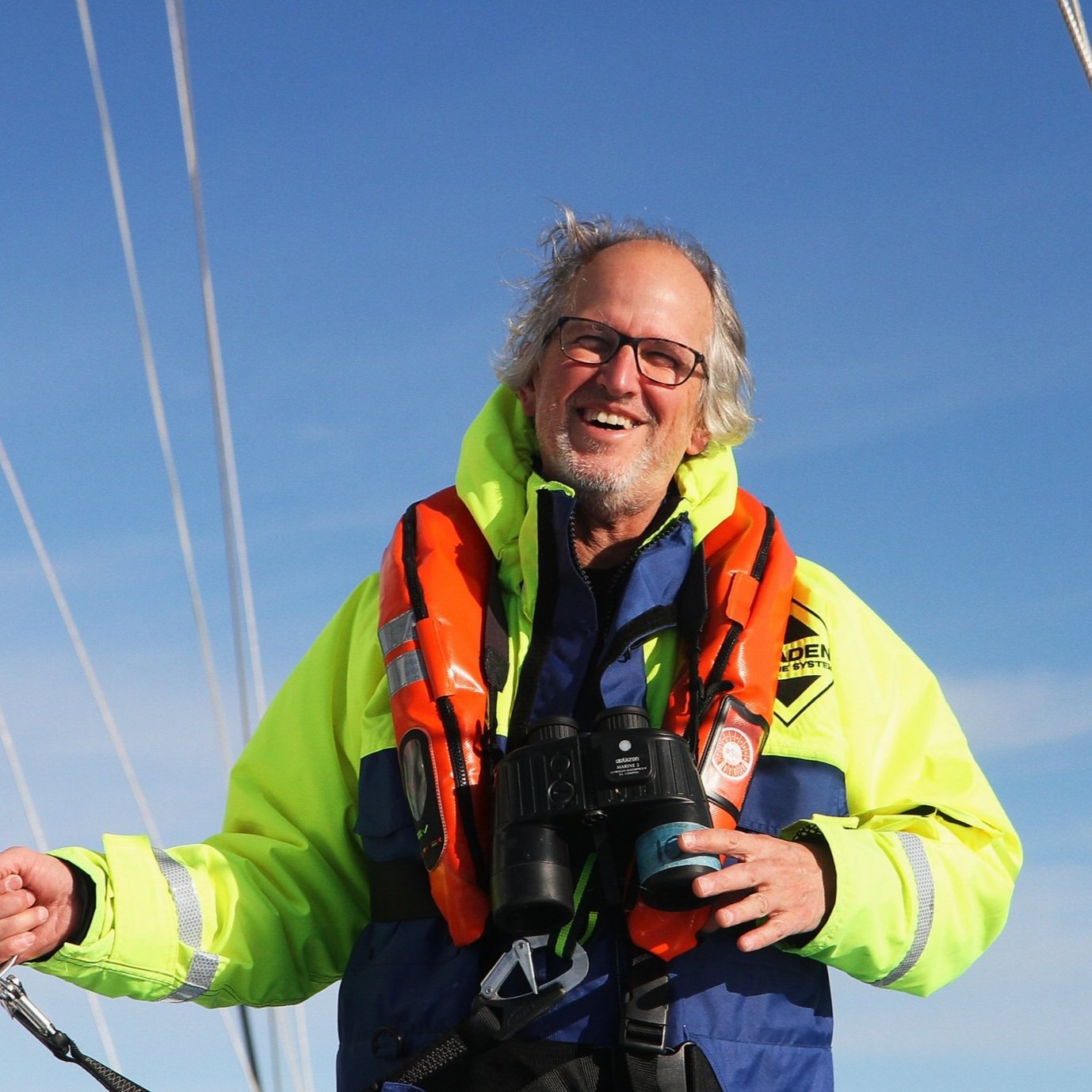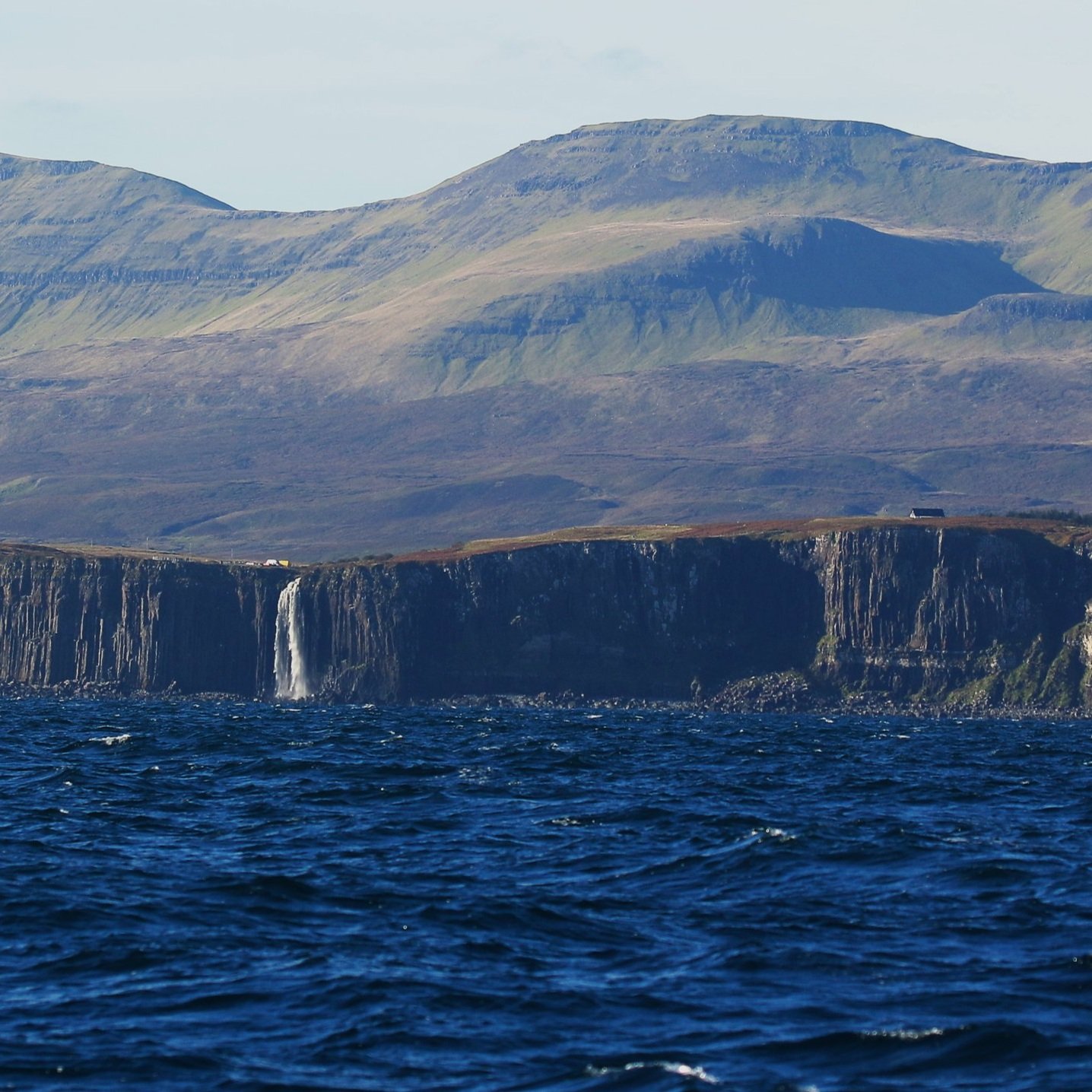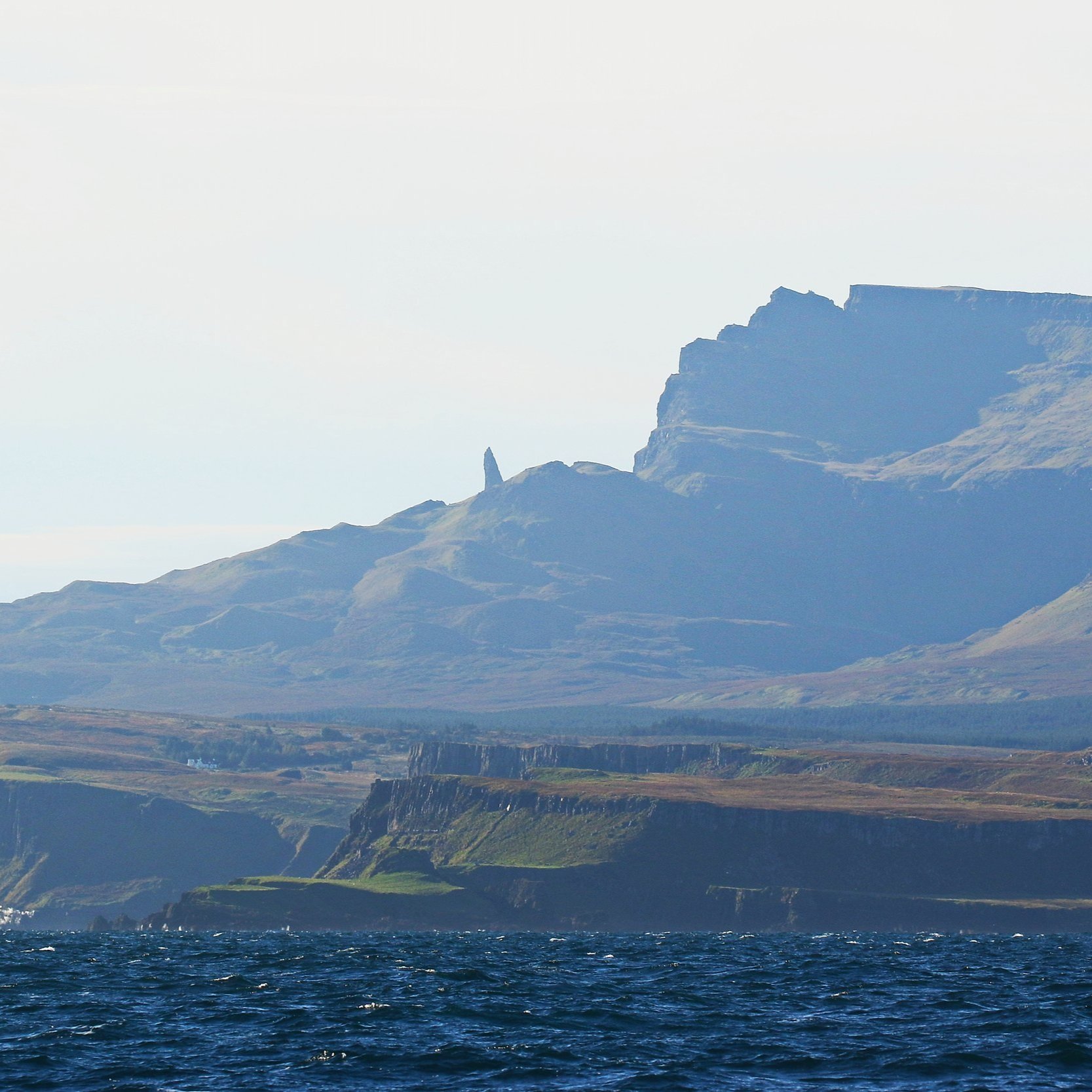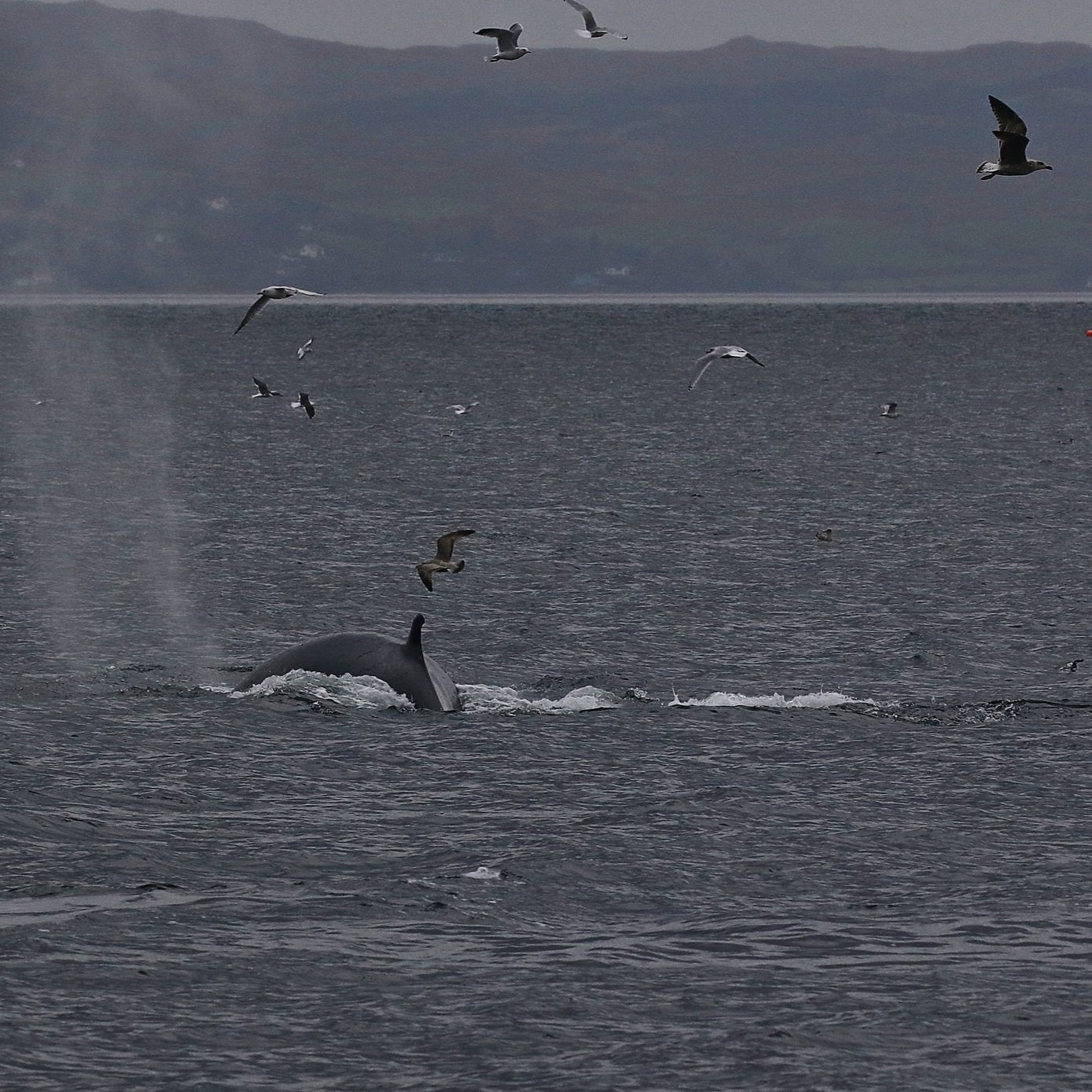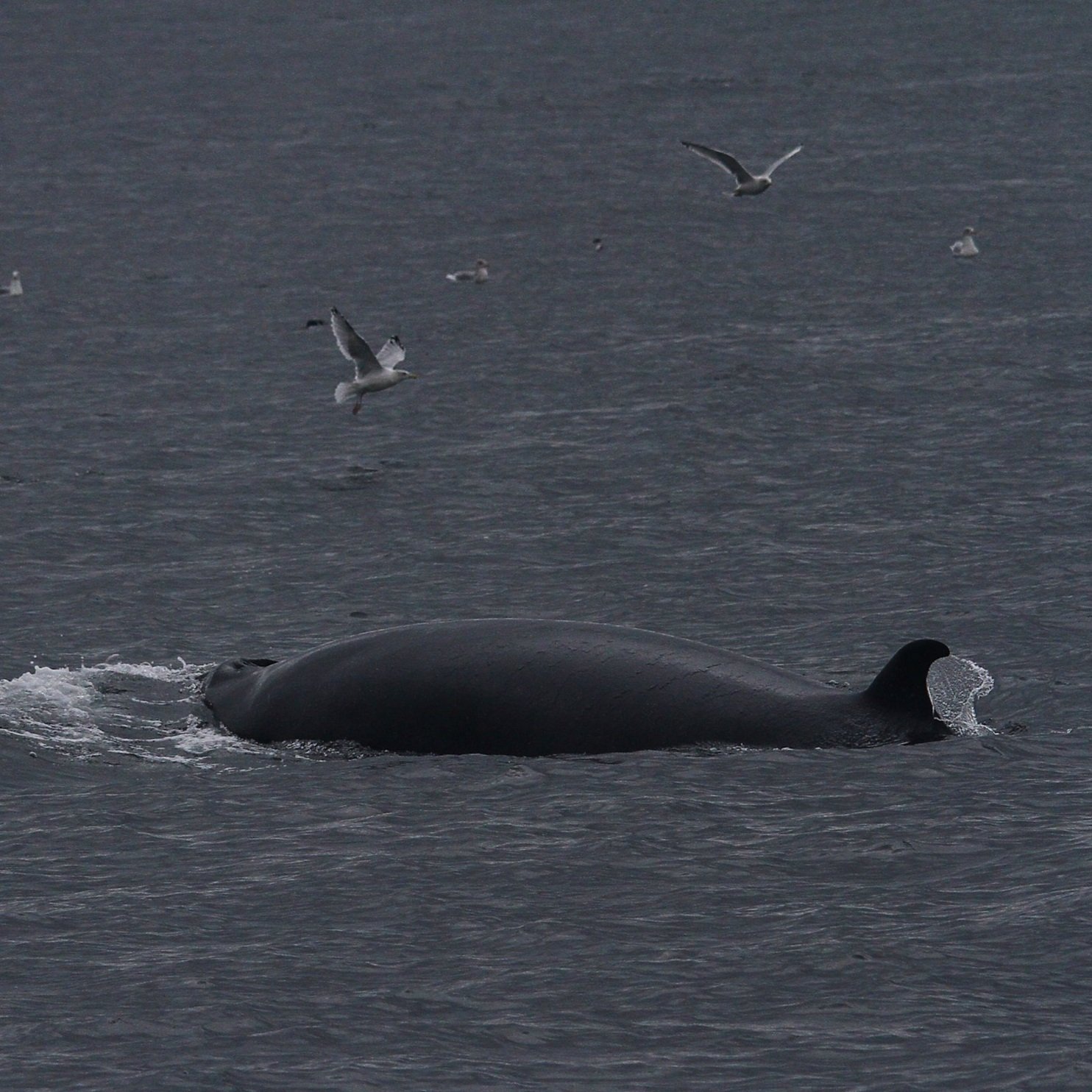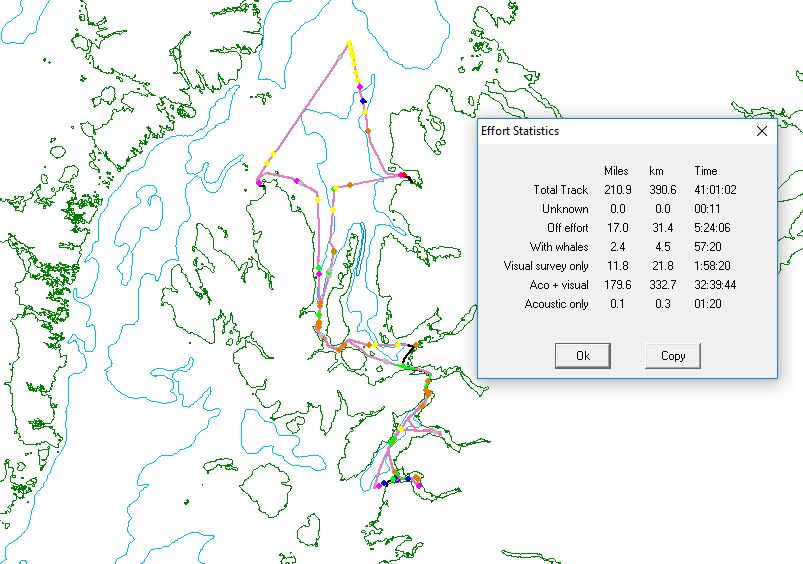Final expedition of 2022 finishes on a high!
OUR FINAL RESEARCH EXPEDITION OF THE 2022 SUMMER FIELD SEASON FINISHED ON A HIGH, with fair weather (makes a wonderful change for the 2022 season), fantastic encounters and memorable moments. HERE CRAIG MACKIE, SCIENCE OFFICER ON BOARD, RECALLS THE EXPEDITION…
The team of citizen scientists joining the crew on board, was welcomed on board Silurian - our research vessel - in the coastal fishing town of Mallaig for the final expedition of the summer season. As rain trickled down from the skies, tip tapping on the deck of the boat, we began planning our survey route. We decided to head north into the Minch - our voyages and evening destinations are generally determined by two factors: first is where weather will allow us to go and anchor the boat in general comfort, the second factor is where we haven’t managed to survey and there may be data gaps. With this being the last expedition, we had already covered the Sea of the Hebrides pretty extensively but a small gap across the East Shiant’s Bank was identified and the weather was looking favourable, so we headed in that direction.
The first morning of survey started as usual, getting the volunteers kitted out and trained up in their duties and what would be expected of them during the expedition. It wasn’t long before we cast the ropes from the pontoon and got underway. Beginning in fairly choppy waters, we were barely out of the harbour when one of the team - joining us for his second expedition of the season - made the first sighting, a minke whale. Unfortunately, it was not to be seen again given the torrid conditions. Despite the rain and the rolling sea, this early spot helped left spirits. We ventured on as seabirds fed all around us in the Sound of Sleat. With conditions worsening, we made the decision to head north and into Loch Hourn, then travelling through Kyle Rhea and into Loch Alsh where we would settle for the night at Kyleakin. We anchored under the Skye Bridge surrounded by common seals scattered over the rocks along the shoreline.
The weather eased the following day as we passed under the Skye Bridge, towards the north end of Scalpay. The first few hours were quiet, and it wasn’t until we had rounded the bottom of Raasay into the Inner Sound before anything was recorded. A few common seals surfaced with increasing frequency and before long a few small fins cut through the water - a group of 3 or 4 porpoise. We continued up the Sound, with common seals turning to greys as we travelled north. We encountered another group of porpoises, this time however they were a large group of around 20 making their way along the shoreline. We remained on our northern trajectory and eventually found ourselves in the open waters of the Minch. The sound of dolphin whistles was picked up by the hydrophone and grew in volume the further north we surveyed. Eventually we hit the crescendo and a few splashes were spotted ahead of the boat. Moving forward, more fins were spotted to the starboard side and before we knew it the entire boat was surrounded by common dolphins. We estimated 120 animals joined us on our transect swimming playfully around the bow, before leaping off to get on with their day. We made passage towards Gairloch and had another, smaller, group of commons. Things went quite after that until we got to the mouth of the loch and just as we were about to come ‘off effort’ a giant splash was spotted at the back end of the boat. All eyes turned to see what could have been the culprit and after a few seconds it appeared again…a leaping bluefin tuna! Several metres in length it was a truly impressive specimen. A nice way to end the day and as we anchored in Badachro, just south of Gairloch, it was noted there was a lovely little pub we could visit and so we joined the volunteers to celebrate a great day at sea with a refreshing beverage.
One of the concerns this late in the season is that cold weather and strong winds become more common-place, making it difficult to get a window where we can get out to survey safely. Today however no such problems arose, with blue skies and flat seas welcoming us into the Minch. We made for the East Shiants Bank, a shallow area sitting in the middle of the Minch surrounded by deep channels on either side. Areas like this are often rich in biodiversity as deep water is forced to the surface, bringing nutrients with it and allowing plankton and other small creatures to thrive, in turn feeding the larger beasts. A few seals popped their heads up around the boat and before long the whistles of common dolphins were heard, before they showed up in good numbers. As they played around our wake, I tried counting the numbers with small pods showing up all around. While I was focussing on a dolphin pod in the distance, one of the volunteers noticed a large back emerging above the surface - a minke whale. We moved away from the dolphins (or tried to at least… they followed) and made our way towards the whale to attempt to get some identification photos. Unfortunately, it was only seen once or twice more before disappearing completely. Closing in on the bank, we were joined by several, smaller pods of dolphins. We turned, about heel, and made our way for Rubha Hunish (roughly translated to “headland of the bear cub… no bears were spotted) on the north end of Skye. It was quiet for several hours and with the wind increasing it became difficult to spot the animals on the surface. We were almost at our destination after nearly 9 hours of sailing, when we had two more small pods of dolphins leap past the boat, less interested in us at this point. We eventually settled off Duntulm, on the very northern tip of the island.
The light fading earlier at this time of year can be a bit restrictive, limiting the length of time that can be spent ashore of an evening and making longer survey days difficult. However, there is one remarkable benefit in the form of bioluminescence, an awe-inspiring light display. Generated by plankton and chemicals - broadly termed as luciferins - coming in to contact with each other and giving off flashing lights when the surrounding water is disturbed. Skipper Charlie and I encouraged this phenomenon by sloshing buckets around the boat, creating a mini fireworks show in the waters surrounding us.
With the expedition over halfway completed, it was time to head back south. We turned ship, sailing between the headland and Eileen Trodday (Island of the trolls… no trolls were spotted) and moved past Kilt Rock, heading back down the Sound of Raasay. Another pod of dolphins joined us for a short while as we made passage down the impressive east coast of Skye, the Old Man of Storr keeping a watchful eye on us from atop his hill. Moving down the coast we had another fairly large pod of porpoise playfully circling one another just off the bow.
With the sun beginning to go down and darkness creeping in it felt like we had had out lot, but our fortunes held out as we were graced with yet another massive pod of common dolphins. This group was the largest yet, estimating at around 160 with a few individuals riding our bow for around 15 minutes and accompanying us into anchor, before heading back to sea. We stopped at Coral Beach, to the west of Plockton, where the team either visited the shore or went for a swim in the beautiful orange glow of the sunset.
Somehow it was the final survey day, so we made for Mallaig, trundling south back under the Skye Bridge and through Kyle Rhea, which was littered with seals. Through the Sound of Sleat, two or three dolphins passed the bow but were in no mood to stick around, vanishing just as quickly as they’d arrived. There had been reports of a pilot whale in Loch Nevis the day before, so we decided to pop our heads in for an hour in the hopes to check on the condition of the animal. As soon as we entered, we were rewarded as two large white-tailed eagles locked talons spinning gracefully in the air. We went further into the loch and before long a fin was spotted, not the pilot whale, but a small minke foraging around the bay to the north end of the loch.
We surveyed further into the loch, but eventually time was up, and we had to make moves to get back to Mallaig. Fortunately, no one had told the whales our deadline. Two individuals began a large foraging display, lunging their way through large shoals of fish, upsetting the gulls on the surface who were attempting to get their own fill of the buffet. Porpoise soon joined in on the action, with fins popping up all around the area and seabirds crashing down on the surface making the most of what was being left for the taking. This was almost the perfect end to the trip and as well as the season as a whole and, as we tied up alongside for the final time of the season, we could reflect on what had been an amazing week with over four hundred dolphins, dozens of seals and porpoise as well as great views of whales all topped off with fantastic weather.
Across the 7 days, the team surveyed 210 nautical miles of west coast waters encountering 5 different species of marine mammal.
A big thank you to the wonderful citizen scientists who joined the team - Chris, james, jackie, Izzie, Paul and christine. Your efforts have helped contribute towards protecting marine mammals within the Hebrides.
THANKS ALSO TO NATURESCOT FOR SUPPORTING THE DATA COLLECTION ON BOARD SILURIAN.








